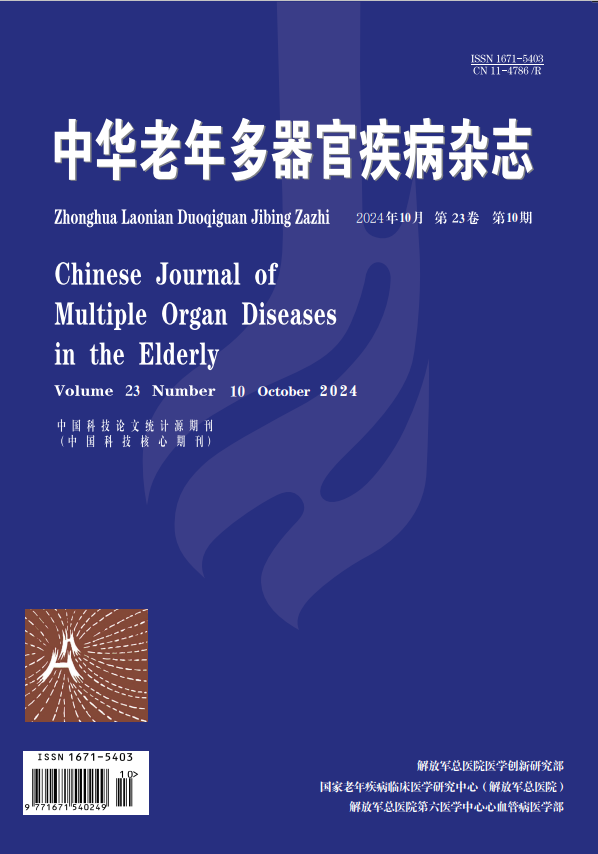Effects of telmisartan on the expression of matrix metalloproteinase-13 and its tissue inhibitor-1 and insulin resistance in nonalcoholic steatohepatitis rat model
引用次数: 0
Abstract
Objective To study the effects of telmisartan on matrix metalloproteinase-13(MMP-13) and tissue inhibitor of metallo- proteinase-1(TIMP-1) expressions and insulin resistance in rat model of nonalcoholic steatohepatitis(NASH).Methods Thirty male SD rats were randomized into normal control group,NASH model group and telmisartan intervention group.The rats were given standard food in normal control group,while high fat diet for 16 weeks in the other two groups to induce NASH.In telmisartan intervention group, telmisartan[5 mg/(kg·d)]was adminstrated intragastrically for 4 weeks since the 12th week.All animals were sacrificed at 16 weeks. Serum levels of alanine aminotransferase(ALT),aspartate transaminase(AST),fasting blood glucose(FBG) and fasting insulin(FINS) were detected.Insulin sensitivity was evaluated by homeostasis model assessment of insulin resistance(HOMA-IR).Western blot and RT-PCR were used to measure TIMP-1 and MMP-13 expressions in hepatic tissue.Histological observation and immunohistochemical staining ofα-smooth muscle actin(α-SMA) were also performed.Results Serum levels of ALT,AST,FPG,FINS and HOMA-IR were significantly higher in NASH group than in normal control group(P0.01).Compared with NASH group,serum levels of ALT,FPG, FINS and HOMA-IR decreased significantly(P0.01),and AST level also decreased,but with no significance(P0.05).Telmisartan improved significantly hepatic inflammation and fibrosis(P0.01),decreased HOMA-IR significantly(P0.01),reduced expresseions ofα-SMA and TIMP-1,and increased expressions of MMP-13 in hepatic tissue(P0.01).Conclusion Telmisartan can improve insulin resistance and prevent hepatic fibrosis in NASH rats.替米沙坦对非酒精性脂肪性肝炎大鼠基质金属蛋白酶-13及其组织抑制剂-1表达及胰岛素抵抗的影响
目的探讨替米沙坦对非酒精性脂肪性肝炎(NASH)模型大鼠基质金属蛋白酶-13(MMP-13)和金属蛋白酶-1组织抑制剂(TIMP-1)表达及胰岛素抵抗的影响。方法30只雄性SD大鼠随机分为正常对照组、NASH模型组和替米沙坦干预组。正常对照组给予标准食物,另外两组给予高脂饮食16周诱导NASH。替米沙坦干预组从第12周开始ig替米沙坦[5 mg/(kg·d)],持续4周。所有动物在16周时被处死。检测血清谷丙转氨酶(ALT)、天冬氨酸转氨酶(AST)、空腹血糖(FBG)和空腹胰岛素(FINS)水平。胰岛素敏感性通过胰岛素抵抗稳态模型评估(HOMA-IR)评估。采用Western blot和RT-PCR检测肝组织中TIMP-1和MMP-13的表达。同时进行α-平滑肌肌动蛋白(α-SMA)的组织学观察和免疫组化染色。结果NASH组血清ALT、AST、FPG、FINS及HOMA-IR水平均显著高于正常对照组(P0.01)。与NASH组比较,血清ALT、FPG、FINS、HOMA-IR水平均显著降低(P0.01), AST水平也显著降低,但无显著性差异(P0.05)。替米沙坦显著改善肝脏炎症和纤维化(P0.01),显著降低HOMA-IR (P0.01),降低肝组织α- sma和TIMP-1的表达,升高肝组织MMP-13的表达(P0.01)。结论替米沙坦可改善NASH大鼠胰岛素抵抗,预防肝纤维化。
本文章由计算机程序翻译,如有差异,请以英文原文为准。
求助全文
约1分钟内获得全文
求助全文
来源期刊
自引率
0.00%
发文量
3039
期刊介绍:
Chinese Journal of Multiple Organ Diseases in the Elderly (monthly) is a medical academic journal under the supervision of PLA General Hospital, sponsored by PLA General Hospital Medical Innovation Research Department, National Clinical Medical Research Center for Geriatric Diseases (PLA General Hospital), and Department of Cardiovascular Medicine of the Sixth Medical Center of PLA General Hospital, and publicly issued at home and abroad. This journal was founded in June 2002 and is a Chinese Science and Technology Paper Statistical Source Journal (China Science and Technology Core Journal), and is included in major domestic retrieval systems and well-known domestic and foreign retrieval systems such as the American Chemical Abstracts.
As the only academic journal in China that reflects multi-organ diseases in the elderly, Chinese Journal of Multiple Organ Diseases in the Elderly mainly exchanges the diagnosis and treatment experience and lessons of cardiovascular diseases in the elderly, especially cardiovascular diseases in the elderly combined with other diseases, diseases of more than two organs in the elderly, and other multiple diseases in the elderly, explores their pathogenesis and effective diagnosis and treatment measures, and focuses on reporting the latest clinical, basic and preventive achievements and experiences in the research of the above diseases in my country with innovative significance; the main readers are medical, scientific research and teaching personnel engaged in geriatric cardiology and (or) geriatric medicine and related diseases.
The main columns include expert comments, special forums, clinical research, basic research, clinical pharmacy, case reports, new technologies and methods, clinical pathology discussions, reviews, academic trends, expert popular science lectures, etc.

 求助内容:
求助内容: 应助结果提醒方式:
应助结果提醒方式:


